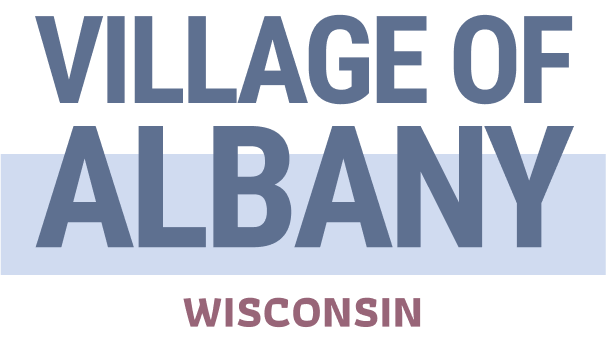The first people to live in the Albany area were Native Americans of the Winnebago tribe. They came in the spring with their children and their ponies, setting up camp, tending their gardens, and fishing in the Sugar River. Legend has it that they called the river “Tonasookarah” meaning sugar and also referring to the maple trees along the riverbank.
“Campbell’s Ford,” the name by which Albany was first known, was an ideal river crossing settled by James Campbell and Thomas Stewart in 1839. Seven years later Captain Erastus Pond, master of a Great Lakes ship, and Dr. Samuel Nichols, from Vermont, attracted by prospects of excellent water power and the scenic area, came to Campbell’s Ford with their families. Dr. Nichols built a double log home, which was shared by the Pond family for a few months until they built their own. Both homes were on the east side of the river. These families were followed by others from New York state and New England. Very soon, settlers came from Norway, Germany, Ireland, Wales and Switzerland, and Albany was on its way to becoming a prosperous community, surrounded by thriving farms.
Albany gained some fame at the end of the 19th century as a city located on the “RIVER OF PEARLS.” There was an abundance of oysters and clams in the Sugar River.
From the Albany Weekly Times of June 8, 1858.
“The population of about 700 is chiefly composed of the most energetic people from the eastern states. Sugar River affords one of the best water powers between the Rock and Mississippi Rivers and propels at the present time, machinery for two large flouring mills, one saw mill, one cabinet and chair manufactory, one corn mill, one woolen carding and cloth dressing machine. We have in the business part of the village five dry goods stores, three groceries, one hardware, one book and drug store and 19 machine shops, such as tin, copper and sheet iron, harness, blacksmith, paint, wagon, boot and shoe, etc. We have one school house thirty by fifty feet, two stories high to be finished in modern style at a cost of about $2,000. A spacious church, the spire of which reaches to the height of 112 feet also attracts by its beauty the attention of the traveler as he wends his way to the quiet village. One big hotel is situated on the west side of the river.
Around this village is a tract of country, settled by a class of people full of energy, an agricultural region the trade of which always gives evidence of a thickly settled, highly improved and well-tilled area of country.”
